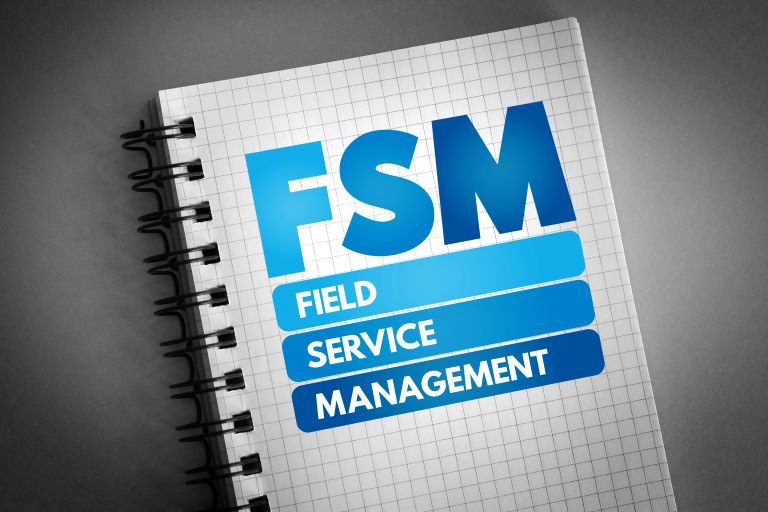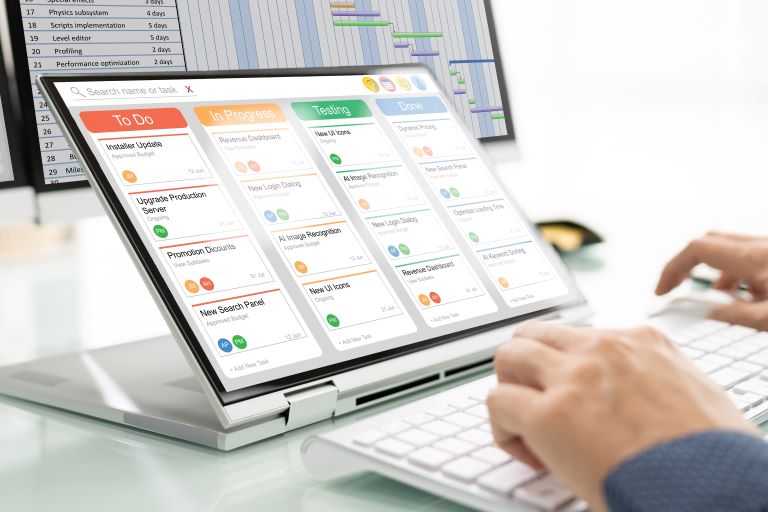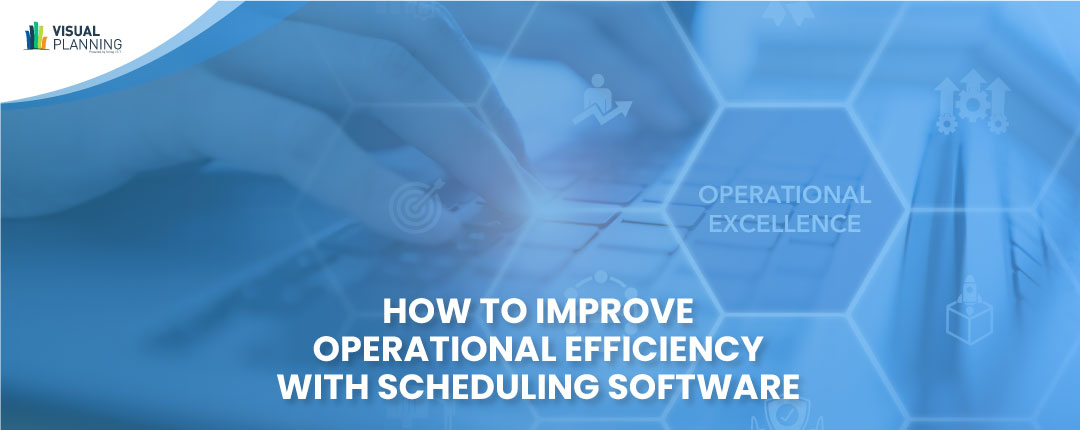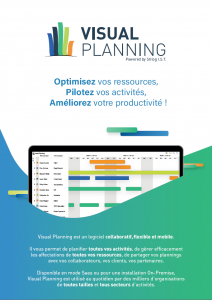In today’s fast-paced business environment, improve operational efficiency is crucial for the success of any organization. As a leader, you may wonder how to improve efficiency. Structured operations not only ensure that tasks are completed promptly, but they also contribute to overall productivity and profitability. One tool that can significantly enhance efficiency is scheduling software. Businesses can streamline their processes, reduce operating expenses, and achieve better results by managing and optimizing schedules effectively. This article will discuss the importance of improve operational efficiency and how this type of software can improve efficiency.
Why is Efficiency Important?

Before diving into the benefits of scheduling software, let’s first understand why efficiency is paramount. Systematic operations allow businesses to maximize resources such as time, money, and workforce. By utilizing these resources effectively, organizations can minimize waste and maximize output. When every minute and every action counts, efficiency becomes a key differentiator in today’s competitive landscape.
Efficiency is not just about saving time and money; it also plays a crucial role in sustainability. Businesses prioritizing efficiency in growing environmental concerns can reduce their carbon footprint. Organizations can contribute to a greener, more sustainable future by optimizing processes and minimizing waste.
Moreover, streamlined operations pave the way for better customer satisfaction. When tasks are completed promptly and with minimal errors, customers are more likely to be satisfied with the products or services. This, in turn, leads to increased customer loyalty and positive word-of-mouth recommendations.
Furthermore, efficiency promotes a positive work culture and employee morale. When employees see that their efforts are being utilized effectively and that their work contributes to the organization’s overall success, they are more likely to feel motivated and engaged. This leads to higher productivity and a lower turnover rate.
Benefits of Enhanced Employee Efficiency

Managers may wonder how to improve employee efficiency as this has many benefits. One of the main benefits of using scheduling software is the increased efficiency it brings to employee workflows. Workers can better manage their time and tasks by having a clear and well-organized schedule, increasing productivity and job satisfaction.
For instance, consider a company with multiple employees working on different projects. With scheduling software, coordinating their efforts and ensuring timely completion of tasks can be manageable. Managers can easily assign tasks, track progress, and monitor resource allocation. This saves time and reduces the chances of miscommunication or missed deadlines.
Moreover, improved worker efficiency goes beyond just task management. This software also allows employees to prioritize their work, ensuring that they focus on the most critical and urgent tasks first. Employees can make informed decisions about allocating their time and energy by having a clear overview of their responsibilities and deadlines.
Another advantage of enhanced employee effectiveness is the reduction of stress and burnout. Staff with a well-structured schedule can better balance their workload and avoid feeling overwhelmed. This leads to improved mental well-being and a higher level of job satisfaction.
Types of Scheduling Software that Can Improve Efficiency at Work
Several types of scheduling software are available in the market, each designed to cater to specific needs and industries. Let’s explore some of the most commonly used ones:
Employee Scheduling Software

Employee scheduling software simplifies the process of creating and managing work schedules. It allows managers to easily assign shifts, track attendance, and ensure an optimal distribution of resources. Businesses can avoid scheduling conflicts, reduce overtime costs, and optimize their workforce by automating this process.
Furthermore, this type of software often includes additional features such as shift swapping and time-off requests. This empowers employees to have more control over their schedules and promotes a sense of autonomy and work-life balance.
Production Scheduling Software

Production scheduling software is a valuable tool for manufacturing companies that helps optimize production processes. It enables businesses to create realistic production plans, allocate resources efficiently, and adjust schedules based on changing demands. Manufacturers can minimize downtime, improve delivery times, and maximize output by streamlining production workflows.
In addition, production scheduling software often integrates with other systems, such as inventory management and supply chain management. This allows for seamless coordination between departments, ensuring that production schedules align with available resources and customer demands.
Field Service Scheduling Software

Field service scheduling software is essential for businesses that rely on service technicians or field teams. It allows companies to schedule appointments, dispatch technicians, and track their progress in real-time. Organizations can minimize travel time, enhance customer experiences, and improve overall service quality by efficiently managing field service operations.
Moreover, field service scheduling software often includes route optimization and GPS tracking features. This enables businesses to optimize travel routes, reduce fuel consumption, and provide accurate estimated arrival times to customers.
How Scheduling Software Can Boost Overall Productivity
In addition to improving employee efficiency, scheduling software also has a direct impact on overall productivity. Let’s explore some key reasons why:
Concisely Measure Your Time
Scheduling software allows businesses to measure and analyze the time spent on various tasks or projects effectively. By gaining insights into time allocation, organizations can identify areas for improvement, eliminate bottlenecks, and make data-driven decisions to optimize workflows.
For example, a marketing team uses scheduling software to track the time spent on marketing campaigns. The software provides detailed reports on the time spent on each task, allowing the team to identify which campaigns take too much time and which need more attention. Armed with this information, the team can reallocate resources and adjust their strategies to ensure maximum efficiency and productivity.
Integrate Regular Breaks

Employees can learn how to improve efficiency at work by integrating regular breaks. From a managerial standpoint, scheduling software enables businesses to incorporate predetermined break times into employees’ schedules, ensuring they have time to rejuvenate and recharge.
For instance, a software development team using scheduling software can set up automatic reminders for their team members to take short breaks every couple of hours. These breaks allow the developers to step away from their screens, stretch their legs, and clear their minds. As a result, they return to their work feeling refreshed and ready to tackle the next task, leading to increased productivity and better overall performance.
Easily Plan for Deadlines
Scheduling software gives businesses a clear overview of upcoming deadlines, allowing them to plan and allocate resources accordingly. By avoiding last-minute rushes and ensuring a steady flow of work, organizations can deliver high-quality results within the specified timeframes.
For example, a project management team using scheduling software can create a visual timeline that shows all the project milestones and deadlines. This timeline helps the team stay on track and ensures that tasks are completed promptly. Having a clear plan, the team can allocate resources effectively, anticipate potential roadblocks, and quickly meet project deadlines.
Receive and Implement Feedback Directly From Employees

Scheduling software often comes with built-in communication features that facilitate direct employee feedback. Organizations can optimize schedules, improve team collaboration, and foster a positive work environment by actively seeking input and incorporating suggestions.
For instance, a customer service team using scheduling software can have a feedback channel where team members can provide input on their schedules. This feedback can include suggestions for better shift rotations, preferred time-off slots, or any other scheduling-related concerns. By listening to their employees’ feedback and implementing changes accordingly, the organization values their input and is committed to creating a schedule that works for everyone. This fosters a sense of ownership and engagement among the team members, leading to increased productivity and job satisfaction.
With the numerous benefits of scheduling software, it’s no wonder that more businesses are incorporating it into their operations. Visual Planning, a leading software provider, empowers organizations with comprehensive scheduling solutions tailored to their unique needs.
Start Improving Operational Efficiency with Visual Planning

Businesses can improve efficiency and productivity with the help of scheduling software. Scheduling software improves operational efficiency by optimizing workflows, reducing costs, and streamlining business processes. Visual Planning’s intuitive interface and robust features enable businesses to effectively manage their schedules, optimize resources, and enhance overall efficiency. From employee scheduling to production planning to field service coordination, Visual Planning offers a range of solutions tailored to different industries. By investing in the right software, businesses can improve productivity, enhance customer satisfaction, and stay ahead of the competition. Request a demo today.
Visual Planning is available on premise or in the cloud. Find out more about all Visual Planning features here, or read our case studies to understand how we are helping many companies to leverage their inner strengths.
Communicator Journalist with an Organizational Communication master degree specialized in Digital Communication from Jean Moulin Lyon 3 University. Passionate about new technologies, social medias, marketing and cooking.



